We use information collected through cookies and similar technologies to improve your experience on our site, analyze how you use it and for marketing purposes.
Your privacy settings
We and our partners use information collected through cookies and similar technologies to improve your experience on our site, analyze how you use it and for marketing purposes. Because we respect your right to privacy, you can choose not to allow some types of cookies. However, blocking some types of cookies may impact your experience of the site and the services we are able to offer. In some cases, data obtained from cookies is shared with third parties for analytics or marketing reasons. You can exercise your right to opt-out of that sharing at any time by disabling cookies.
Manage Consent Preferences
Necessary
Always ON
These cookies and scripts are necessary for the website to function and cannot be switched off. They are usually only set in response to actions made by you which amount to a request for services, such as setting your privacy preferences, logging in or filling in forms. You can set your browser to block oralert you about these cookies, but some parts of the site will not then work. These cookies do not store any personally identifiable information.
Analytics
These cookies and scripts allow us to count visits and traffic sources, so we can measure and improve the performance of our site. They help us know which pages are the most and least popular and see how visitors move around the site. All information these cookies collect is aggregated and therefore anonymous. If you do not allow these cookies and scripts, we will not know when you have visited our site.
Embedded Videos
These cookies and scripts may be set through our site by external video hosting services likeYouTube or Vimeo. They may be used to deliver video content on our website. It's possible for the video provider to build a profile of your interests and show you relevant adverts on this or other websites. They do not directly store personal information, but are based on uniquely identifying your browser and internet device. If you do not allow these cookies or scripts it is possible that embedded video will not function as expected.
Google Fonts
Google Fonts is a font embedding service library. Google Fonts are stored on Google's CDN. The Google Fonts API is designed to limit the collection, storage, and use of end-user data to only what is needed to serve fonts efficiently. Use of Google Fonts API is unauthenticated. No cookies are sent by website visitors to the Google Fonts API. Requests to the Google Fonts API are made to resource-specific domains, such as fonts.googleapis.com or fonts.gstatic.com. This means your font requests are separate from and don't contain any credentials you send to google.com while using other Google services that are authenticated, such as Gmail.
Marketing
These cookies and scripts may be set through our site by our advertising partners. They may be used by those companies to build a profile of your interests and show you relevant adverts on other sites. They do not store directly personal information, but are based on uniquely identifying your browser and internet device. If you do not allow these cookies and scripts, you will experience less targeted advertising.
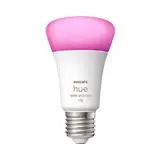
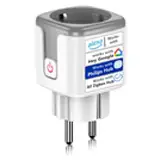
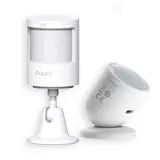
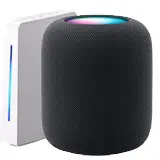
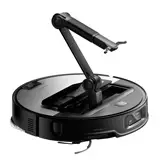

Smart switches: are they worth switching to?
Can you imagine controlling your home's lights with your phone? Or having them turn on automatically at dusk? Sounds like science fiction, right? Well, it's not. These are smart switches, and they're changing the way we interact with our homes.
But, is it really worth it to swap out traditional light switches for these modern devices? The answer isn't as simple as a yes or no. It depends on your needs, your budget, and your level of interest in home automation. Let's break it down.
What are smart switches and how do they work?
Smart switches are basically light switches you can control remotely. Instead of just turning the light on and off manually, you can use your smartphone, tablet, or even your voice. They work by connecting to your home's Wi-Fi network.
Most smart switches need a neutral wire in the electrical box. This means you should check if your wiring setup meets this requirement before buying. Some newer models don't need a neutral, which makes them easier to install in older homes.
Also, many smart switches are compatible with voice assistants like Amazon Alexa or Google Assistant. This allows you to control the lights with simple voice commands, such as "Alexa, turn on the living room light" or "Ok Google, turn off all the lights."
Types of smart switches
Smart Switch Benefits: Why You Should Consider Them?
The main advantage of smart switches is convenience. Being able to control your lights from anywhere is really useful. But there are many more reasons to consider this upgrade:
Smart switch drawbacks: What you need to consider?
"While smart switches offer many benefits, there are also some drawbacks you should consider before making a decision:"
Cost Analysis: When Do You Actually Save Money?
While the upfront cost of smart switches is higher, they can help you save money on your electricity bill in the long run. This is due to several reasons:
To figure out if you'll actually save money, consider the following:
Please note that these are just estimates, and actual savings may vary depending on your energy consumption and electricity prices in your area.
Buying Guide: What to Look for When Choosing Smart Switches?
With so many options available, choosing the right smart switches can be overwhelming. Here are some key factors to consider:
Popular smart switch brands
Smart Switch Installation: DIY or Professional?
Installing smart switches can be a DIY project if you're comfortable working with electricity. However, if you're not experienced, it's best to hire a professional electrician.
Here are some DIY installation tips:
If you decide to hire an electrician, make sure they're qualified and experienced in installing smart switches.
Recommendations and best practices for using smart switches
To get the most out of your smart switches, here are some recommendations and best practices:
Conclusion: Should you switch to smart switches?
Smart switches offer a lot of benefits, from the convenience of remote control to energy savings and increased security. If you're looking to modernize your home and make your life easier, this upgrade is definitely worth considering.
However, it's important to weigh the pros and cons before making a decision. Consider your budget, your needs, and your level of interest in home automation. Research different brands and models, and choose the switches that best suit your needs.
Now that you have all the information you need, are you ready to make the switch to smart lighting? Share this article with your friends and family so they can also discover the benefits of smart switches!
Related Posts
Voice-controlled lighting: Compatible with Alexa, Google, and Siri
Imagine coming home after a long day. You don't reach for the light switch. You just say: "Alexa, turn on the living room lights." And, like magic! The lighting adapts to you. Controlling your lighting with your voice is easier than you think. And it's a reality you can enjoy today. Lighting…
Smart outdoor lighting: safe and efficient options
Smart outdoor lighting has transformed the way we think about the safety, energy efficiency and aesthetics of our outdoor spaces. It's no longer just about having a light that comes on when it gets dark. Now, we're talking about connected systems that adapt to our needs, improve safety and ...
How to choose smart bulbs? Wi-Fi, Zigbee, or Bluetooth?
Can you imagine controlling your home's lights with your phone? Scheduling them to turn on automatically at sunset? Smart bulbs do all this and more. But how do you choose the perfect smart bulb for you? Don't worry! We'll guide you through the options: Wi-Fi, Zigbee, and Bluetooth. Smart Bulbs: Wi-Fi, Zigbee, and…
Lighting automation: create atmospheres with a single click
Imagine coming home after a long day. With a simple click on your phone, the light dims to a warm and inviting level, soft music starts to play, and the blinds lower automatically. Everything is perfectly orchestrated to create the ideal atmosphere to relax. This, and much more, is possible…